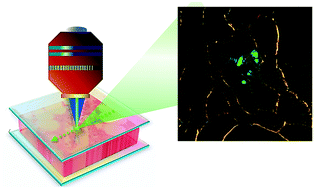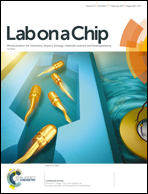Abstract
Biolasers are an emerging technology for next generation biochemical detection and clinical applications. Progress has recently been made to achieve lasing from biomolecules and single living cells. Tissues, which consist of cells embedded in an extracellular matrix, mimic more closely the actual complex biological environment in a living body and therefore are of more practical significance. Here, we developed a highly versatile tissue laser platform, in which tissues stained with fluorophores are sandwiched in a high-Q Fabry–Pérot microcavity. Distinct lasing emissions from muscle and adipose tissues stained respectively with fluorescein isothiocyanate (FITC) and boron-dipyrromethene (BODIPY), and hybrid muscle/adipose tissue with dual staining were achieved with a threshold of only ∼10 μJ mm−2. Additionally, we investigated how the tissue structure/geometry, tissue thickness, and staining dye concentration affect the tissue laser. Lasing emission from FITC conjugates (FITC–phalloidin) that specifically target F-actin in muscle tissues was also realized. It is further found that, despite the large fluorescence spectral overlap between FITC and BODIPY in tissues, their lasing emissions could be clearly distinguished and controlled due to their narrow lasing bands and different lasing thresholds, thus enabling highly multiplexed detection. Our tissue laser platform can be broadly applicable to various types of tissues/diseases. It provides a new tool for a wide range of biological and biomedical applications, such as diagnostics/screening of tissues and identification/monitoring of biological transformations in tissue engineering.



 Please wait while we load your content...
Please wait while we load your content...